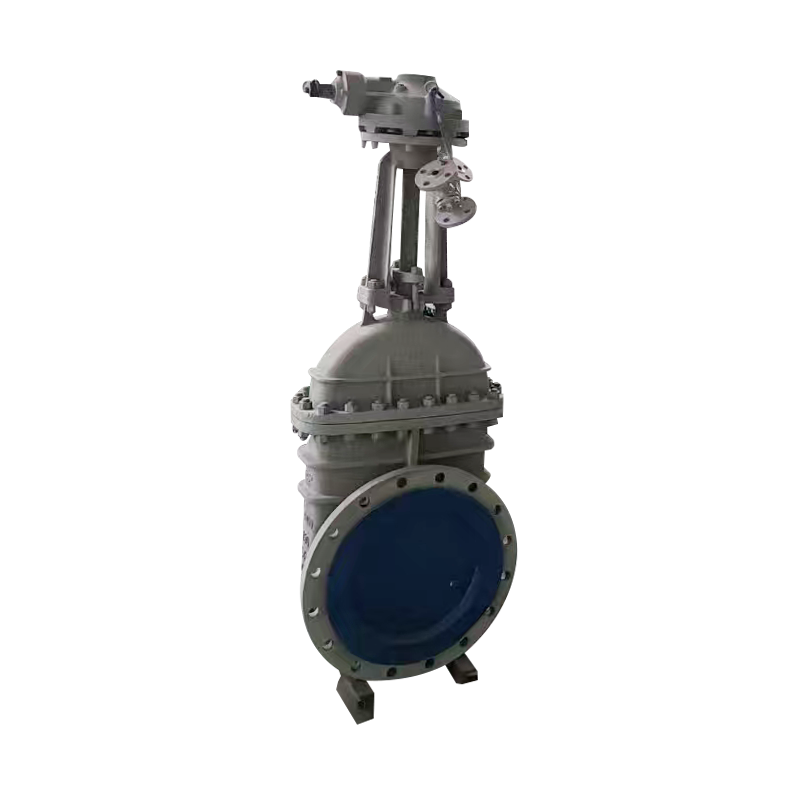

Cast steel gate valves are a common choice in many industrial and commercial piping systems due to their robustness and ability to provide reliable flow control and shut-off. These valves are designed to either fully open or fully close a pipeline, allowing for the unobstructed flow of fluids when open, and a tight seal when closed.
One of the main reasons cast steel gate valves ensure reliable flow control is their construction. Made from cast steel, these valves benefit from the material's strength and resistance to wear and corrosion. Cast steel offers good mechanical properties that allow the valve to withstand high pressures and temperatures, making it suitable for demanding applications such as oil and gas, petrochemical, power generation, and water treatment industries. The durability of cast steel helps maintain valve integrity over time, even under challenging operating conditions.
The gate mechanism inside the valve is designed to move up and down to open or close the flow path. When fully open, the gate is completely retracted, which allows fluid to pass through with minimal resistance. This characteristic is valuable because it reduces pressure drop across the valve and maintains efficient flow. The clear bore design of cast steel gate valves makes them well-suited for applications where uninterrupted flow is important.
Shut-off reliability is another key attribute of cast steel gate valves. The flat or wedge-shaped gate creates a tight seal against the valve seats when closed, preventing any leakage. The valve seats, typically made from materials compatible with the cast steel body, ensure a proper seal even after repeated cycles of operation. This reliable shut-off capability is critical in systems where isolation is necessary for maintenance or emergency situations.
Maintenance and serviceability are also factors that contribute to the reliability of cast steel gate valves. These valves often feature a bolted bonnet design that allows easy access to internal components. This design simplifies routine inspection, cleaning, and repair, extending the valve's service life. Operators can replace worn parts such as seals or seats without the need to remove the entire valve from the pipeline, reducing downtime and operational costs.
The operational design of cast steel gate valves supports precise control as well. The rising stem and handwheel mechanism provide visual indication of the valve's position, enabling operators to verify whether the valve is open or closed. This feature helps avoid accidental partial openings or closings, which could disrupt flow or cause system damage. The mechanical advantage offered by the threaded stem design also allows smooth operation, even for larger valves that handle high-pressure fluids.
Cast steel gate valves come in a variety of pressure ratings and sizes, offering versatility for different applications. Their adaptability means they can be found in small pipelines as well as large industrial systems. This flexibility, combined with the reliable shut-off and flow control features, makes cast steel gate valves a dependable component in fluid handling systems worldwide.
Another aspect that contributes to the reliability of cast steel gate valves is their resistance to external factors such as temperature fluctuations and environmental conditions. Cast steel can tolerate a wide range of temperatures without compromising structural integrity, which is important in industries where thermal cycling occurs frequently. Additionally, the robust design helps protect the valve from mechanical damage and external impacts that could otherwise affect performance.
Cast steel gate valves ensure reliable flow control and shut-off through their sturdy construction, effective sealing mechanism, ease of maintenance, and operational design. Their ability to handle high pressures, resist wear and corrosion, and provide clear indication of valve position makes them a practical choice for many industrial applications. Selecting a cast steel gate valve that meets the specific requirements of a system can contribute significantly to safe and efficient pipeline operation over time.

